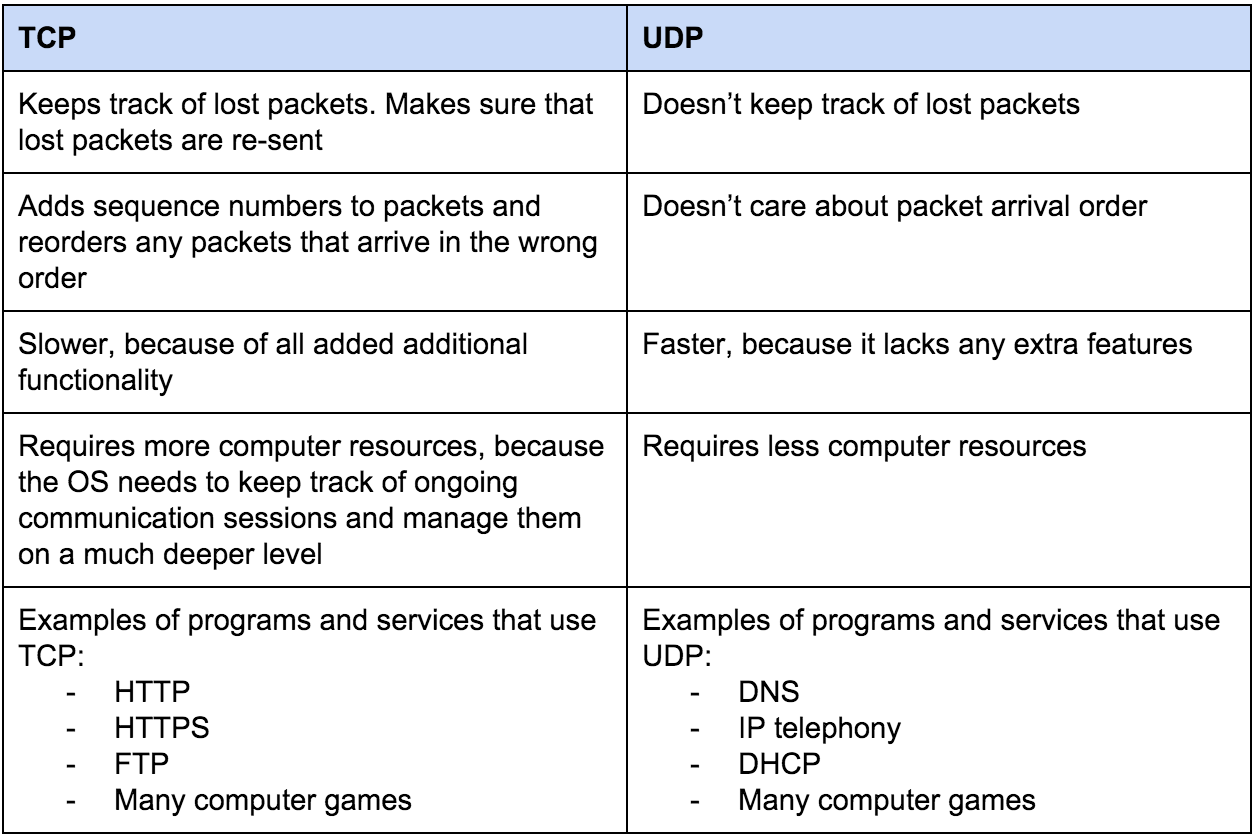Differences between MAC and IP address.
IP address - is the address assigned to your mobile,printer or computer by the network that uses Internet protocol for communication . IP can change with the change in network.MAC(Media Access Control) address - is your machine address. MAC address cannot be changed (Fixed address). The device will have communication with the local area network or any network using this address .
An IP Address header Sections:
Version—A 4-bit field that identifies the IP version being used. The current version is 4, and this version is referred to as IPv4.
Length—A 4-bit field containing the length of the IP header in 32-bit increments. The minimum length of an IP header is 20 bytes, or five 32-bit increments. The maximum length of an IP header is 24 bytes, or six 32-bit increments. Therefore, the header length field should contain either 5 or 6.
Type of Service (ToS)—The 8-bit ToS uses 3 bits for IP Precedence, 4 bits for ToS with the last bit not being used. The 4-bit ToS field, although defined, has never been used.
IP Precedence— A 3-bit field used to identify the level of service a packet receives in the network.
Differentiated Services Code Point (DSCP)—A 6-bit field used to identify the level of service a packet receives in the network. DSCP is a 3-bit expansion of IP precedence with the elimination of the ToS bits.
Total Length—Specifies the length of the IP packet that includes the IP header and the user data. The length field is 2 bytes, so the maximum size of an IP packet is 216 – 1 or 65,535 bytes.
Identifier, Flags, and Fragment Offset—As an IP packet moves through the Internet, it might need to cross a route that cannot handle the size of the packet. The packet will be divided, or fragmented, into smaller packets and reassembled later. These fields are used to fragment and reassemble packets.
Time to Live (TTL)—It is possible for an IP packet to roam aimlessly around the Internet. If there is a routing problem or a routing loop, then you don't want packets to be forwarded forever. A routing loop is when a packet is continually routed through the same routers over and over. The TTL field is initially set to a number and decremented by every router that is passed through. When TTL reaches 0 the packet is discarded.
Protocol—In the layered protocol model, the layer that determines which application the data is from or which application the data is for is indicated using the Protocol field. This field does not identify the application, but identifies a protocol that sits above the IP layer that is used for application identification.
Header Checksum—A value calculated based on the contents of the IP header. Used to determine if any errors have been introduced during transmission.
Source IP Address—32-bit IP address of the sender.
Destination IP Address—32-bit IP address of the intended recipient.
Options and Padding—A field that varies in length from 0 to a multiple of 32-bits. If the option values are not a multiple of 32-bits, 0s are added or padded to ensure this field contains a multiple of 32 bits.
IP Address Classes
| Class | Address Range | Supports |
|---|---|---|
| Class A | 1.0.0.1 to 126.255.255.254 | Supports 16 million hosts on each of 127 networks. |
| Class B | 128.1.0.1 to 191.255.255.254 | Supports 65,000 hosts on each of 16,000 networks. |
| Class C | 192.0.1.1 to 223.255.254.254 | Supports 254 hosts on each of 2 million networks. |
| Class D | 224.0.0.0 to 239.255.255.255 | Reserved for multicast groups. |
| Class E | 240.0.0.0 to 254.255.255.254 | Reserved for future use, or Research and Development Purposes. |
IPv4 public address and IPv6 private address
IP version 4 public address (IPV4)
is a public IP address is the address that is assigned to a computing device to allow direct access over the Internet.
IP version 6 private address (IPV6)
is a private IP address is the address space allocated by InterNIC to allow organizations to create their own private network.
Difference IPV4 and IPV6
IPv4 used to to identify devices on a network through an addressing system. it is also designed for use in interconnected systems of packet-switched computer communication networksIPv6 is designed to allow the Internet to grow steadily, both in terms of the number of hosts connected and the total amount of data traffic transmitted.


Difference TCP and UDP

Subnet and Subnet Addressing
A subnet (short for "subnetwork") is an identifiably separate part of an organization's network. Typically, a subnet may represent all the machines at one geographic location, in one building, or on the same local area network (LAN).Subnet addressing allows us to split one IP network address into smaller multiple physical networks known as subnetworks. Some of the node numbers are used as a subnet number instead.
VLSM
A Variable Length Subnet Mask (VLSM) is a numerical masking sequence, or IP address subset, based on overall network requirements. A VLSM allows a network administrator to use long masks for networks with few hosts and short masks for networks with multiple hosts. A VLSM is used with a VLSM router and must have routing protocol support.
No comments:
Post a Comment